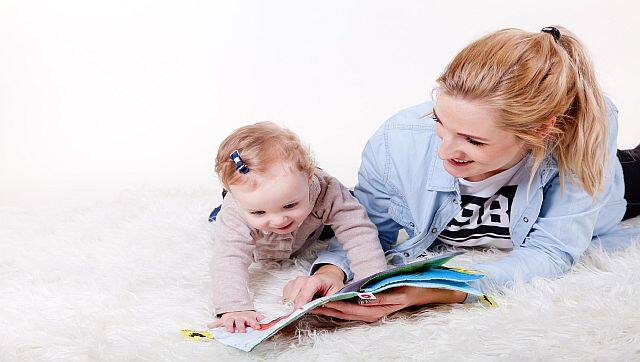Baby boys have seized centre stage in the babbling arena. Contrary to the popular belief that girls have an early linguistic advantage, these tiny chatterboxes prove that they are capable of talking circles around their female counterparts. According to a scientific paper out on Wednesday baby boys are found more vocal in their first year than girls. But girls catch up and overtake them by the age of two. What did the study find? The findings, published in iScience after the largest ever study on the subject, came as a surprise even to the paper’s authors. They say it might be the result of an important sex difference that emerged during our species’ evolution. A team led by D Kimbrough Oller of the University of Memphis, Tennessee used an algorithm to trawl through a data set of more than 450,000 hours of non-stop audio from 5,899 infants, recorded using an iPod sized device over two years. [caption id=“attachment_12675892” align=“alignnone” width=“640”] Infants make sounds in order to signal their well-being to their caregivers. Image used for representational purpose/Pixabay[/caption] “This is the biggest sample for any study ever conducted on language development, as far as we know,” Oller said in a statement. While young babies don’t talk, they produce pre-speech vocalisations — squeals, growls, raspberries, and later word-like sounds such as “ba” and “ga” — collectively called “protophones” that eventually give way to real words and sentences. The idea that girls acquire language faster than boys has long held sway in scientific circles, and with it the assumption that baby girls vocalise more than baby boys. However, the results showed that boys made 10 per cent more utterances in the first year of life, before the girls caught up and made seven per cent more sounds by the second year. Evolutionary theory The differences occurred despite the fact that adult care-givers spoke more to girls than to boys across both years. One theory for the finding was that male infants were more vocal because they were more active in general. But the data did not support this, since higher male vocalisations gave way to females around the 16-month mark, but higher physical activity did not. [caption id=“attachment_12675922” align=“alignnone” width=“640”]
 The differences occurred despite the fact that adult care-givers spoke more to girls than to boys across both years. Image used for representational purpose/Pixabay[/caption] Instead, the team suggests their findings might fit an evolutionary theory which holds that infants make sounds in order to signal their wellbeing to their caregivers, who in turn invest more energy and attention in them. Boys have higher mortality rates than girls in their first year of life, according to a broad body of research, and so it may follow that more vocal baby boys in the distant past were more likely to survive and pass on their genes. But by the second year of life, death rates have dropped dramatically for both sexes, and “the pressure on special fitness signalling is lower for both boys and girls,” said Oller. Next, Oller plans more research on how caregivers respond to baby talk. “We anticipate that caregivers will show discernible reactions of interest and of being charmed by the speech-like sounds, indicators that fitness-signalling by the baby elicits real feelings of fondness and willingness to invest in the well-being of infants,” he said. With inputs from AFP Read all the Latest News , Trending News , Cricket News , Bollywood News , India News and Entertainment News here. Follow us on
Facebook,
Twitter and
Instagram.
The differences occurred despite the fact that adult care-givers spoke more to girls than to boys across both years. Image used for representational purpose/Pixabay[/caption] Instead, the team suggests their findings might fit an evolutionary theory which holds that infants make sounds in order to signal their wellbeing to their caregivers, who in turn invest more energy and attention in them. Boys have higher mortality rates than girls in their first year of life, according to a broad body of research, and so it may follow that more vocal baby boys in the distant past were more likely to survive and pass on their genes. But by the second year of life, death rates have dropped dramatically for both sexes, and “the pressure on special fitness signalling is lower for both boys and girls,” said Oller. Next, Oller plans more research on how caregivers respond to baby talk. “We anticipate that caregivers will show discernible reactions of interest and of being charmed by the speech-like sounds, indicators that fitness-signalling by the baby elicits real feelings of fondness and willingness to invest in the well-being of infants,” he said. With inputs from AFP Read all the Latest News , Trending News , Cricket News , Bollywood News , India News and Entertainment News here. Follow us on
Facebook,
Twitter and
Instagram.
According to a scientific paper released on Wednesday, baby boys are found to be more vocal in their first year than girls. But girls catch up and overtake them by the age of two
Advertisement
End of Article


)

)
)
)
)
)
)
)
)



